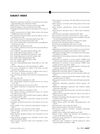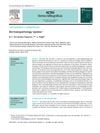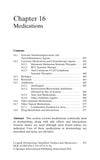Sorafenib-Induced Eruption Resembling Pityriasis Rubra Pilaris
July 2011
in “
Journal of the American Academy of Dermatology
”
TLDR A man developed a rash similar to pityriasis rubra pilaris after starting sorafenib for cancer, possibly due to the drug's effect on skin cells.
The document reports a case of a 40-year-old man who developed a pityriasis rubra pilaris (PRP)-like eruption after starting treatment with sorafenib, a kinase inhibitor used for metastatic renal cell carcinoma and unresectable hepatocellular carcinoma. The patient, who was part of a phase I trial for metastatic germ cell cancer, presented with a rash two weeks after initiating sorafenib therapy. Despite previous cancer treatments, he had no personal or family history of papulosquamous disorders. A skin biopsy confirmed the PRP-like eruption, but the rash did not improve significantly with topical treatment over a three-month period. The document suggests that sorafenib's effect on keratinocyte biology, possibly through the RAF/MEK/ERK signaling pathway, may be responsible for the eruption. This case is notable as it appears to be the first report of drug-induced PRP de novo. The document also mentions that cutaneous side effects of sorafenib are generally reversible with dose reduction or discontinuation and that controlling the rash without stopping the kinase-inhibitor therapy is often the treatment focus for patients.



